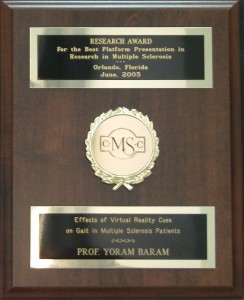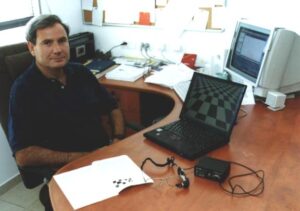There are approximately 1 million multiple sclerosis patients, 2 million Parkinson’s patients, 20 million brain stroke victims, 20 million cerebral palsy victims and 100 million people suffering from senile gait in the western world (US, Europe, Japan). We have found that seven in ten Parkinson’s patients, six in ten multiple sclerosis patients, five in ten brain stroke patients and four in ten senile gait patients are helped by the device to some degree.
You can find out for yourself if this device can improve your walk by checking if your walk is improved when you use real markings on the ground. You may already know the answer from your past experience, or you may perform a simple test to find out. You may use a tiled floor with highly visible color contrast between the tiles for this purpose. You may also use a colored adhesive tape, a color marker, sticks, or other such objects, to create lines, half a meter apart, perpendicular to the direction of motion. When you walk, try to reach the next line with your foot. Change the distances between the lines until you feel comfortable in your walk. You may ask a family member or a friend to time your walk, or simply observe you as you walk. If you find that your walk pattern has improved, or that you are more comfortable walking with the lines than without them, the Visual Walker is likely to improve your walk. All it does is place virtual lines on the ground in front of you in places where there are no real lines. These virtual lines respond dynamically to your walk just like real ones. With almost no training, these virtual lines will work for you as real markings on the floor.


